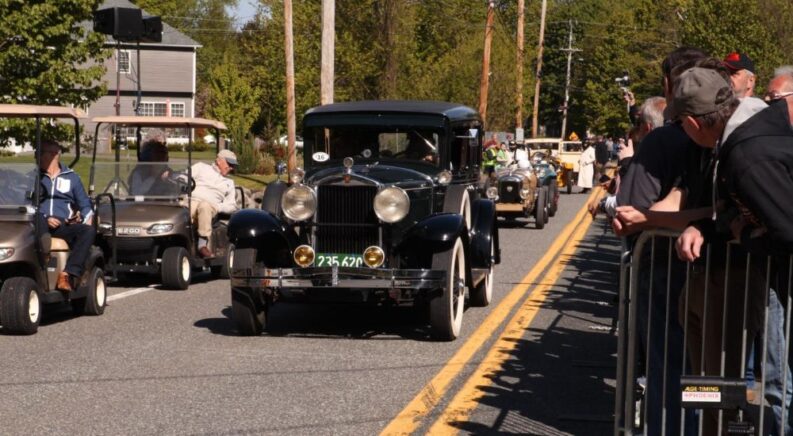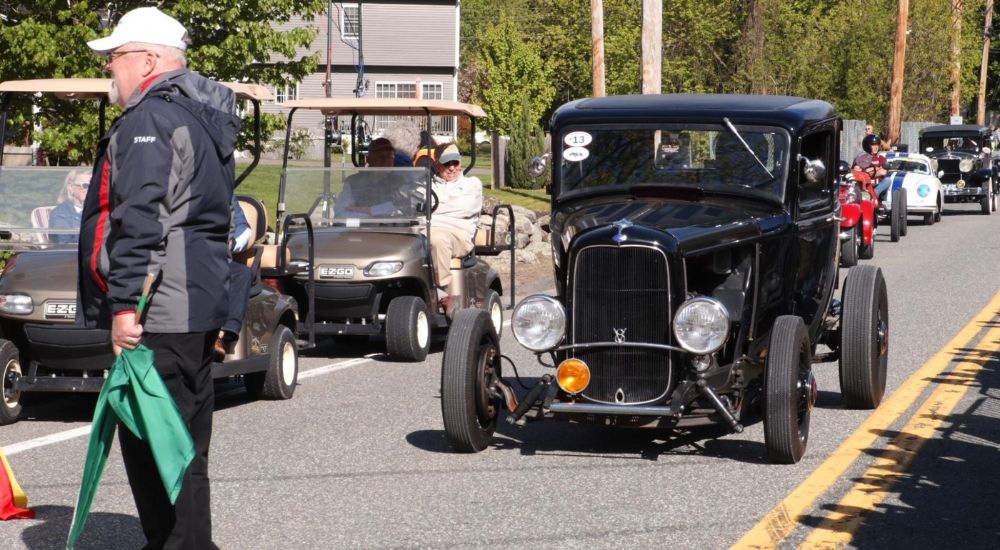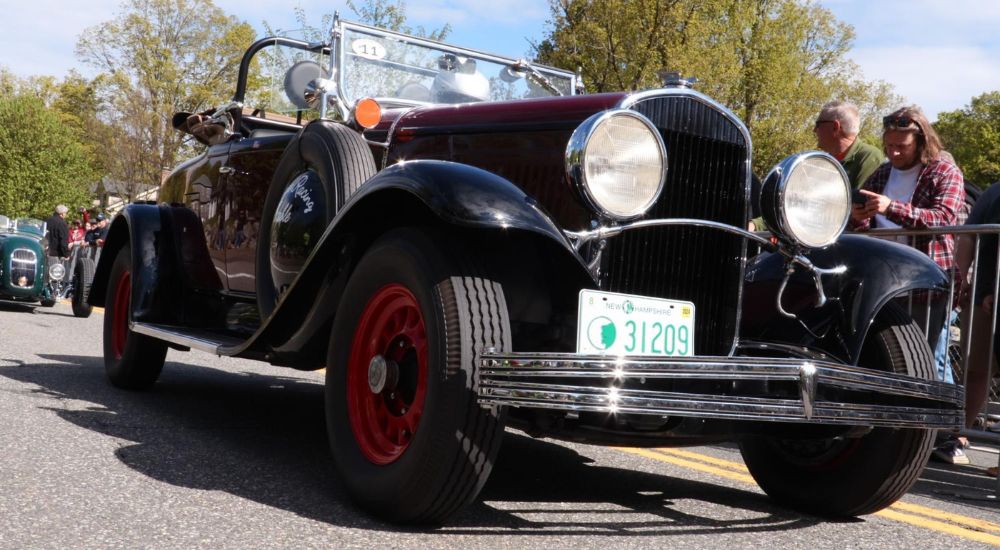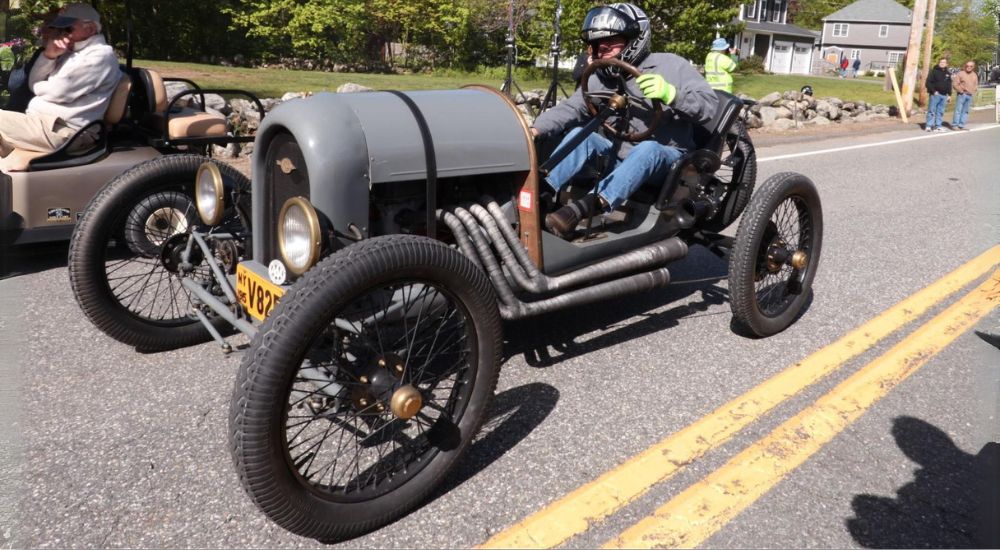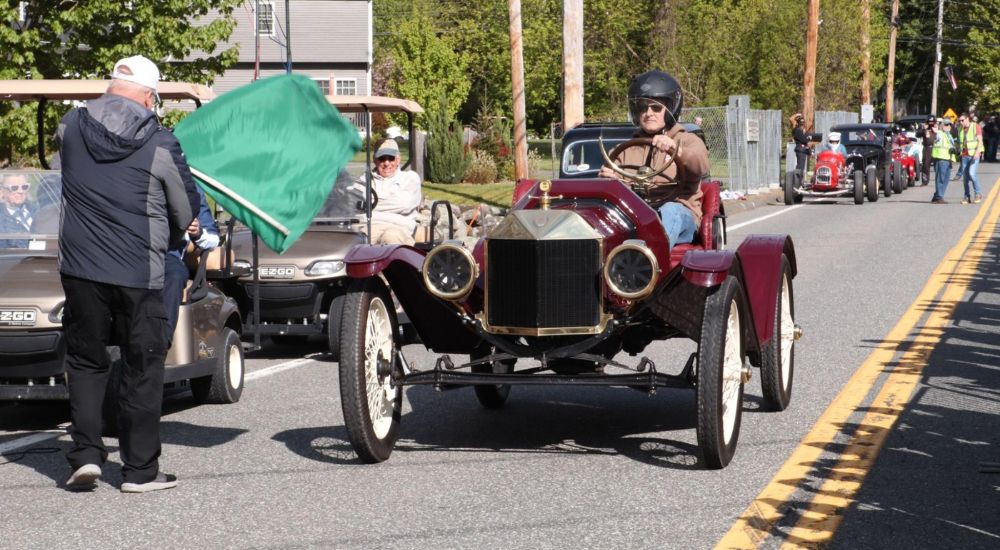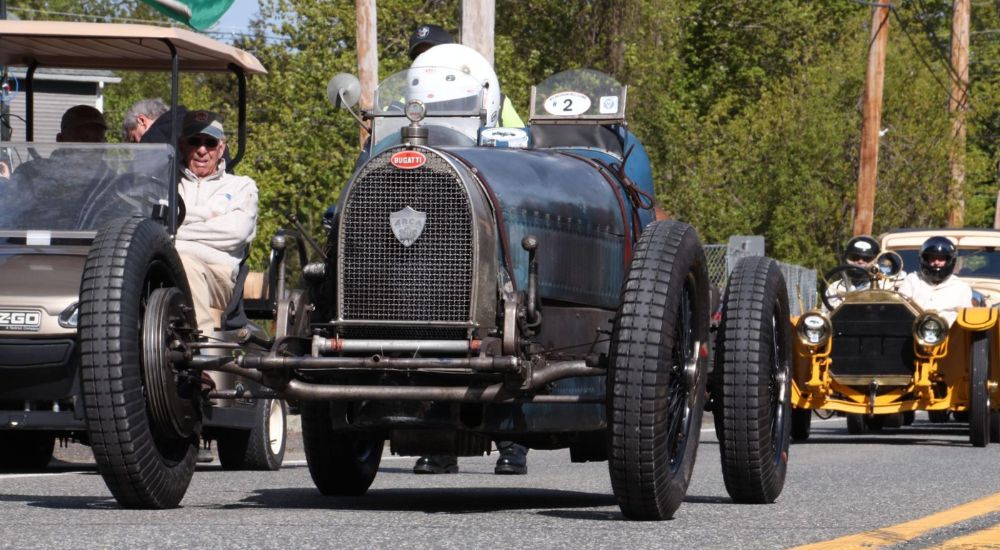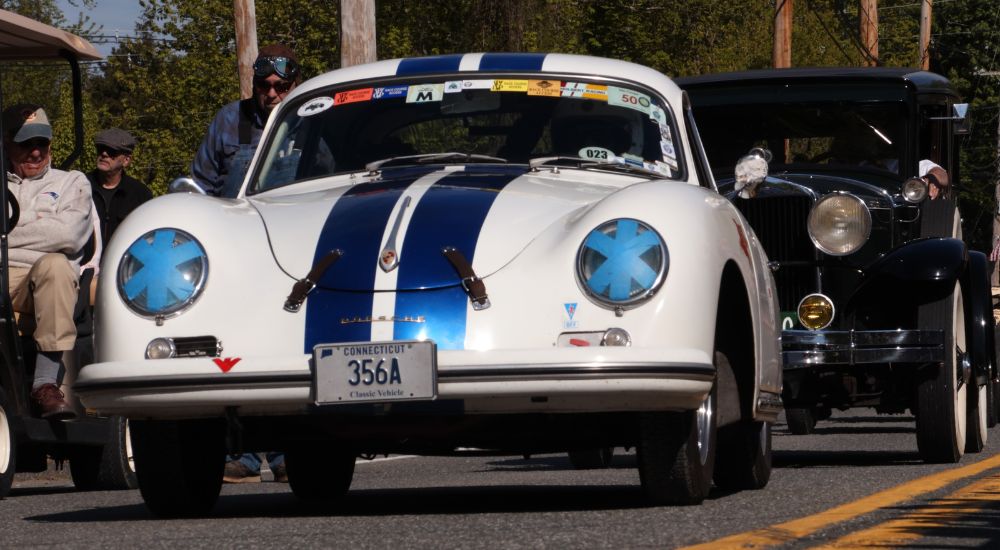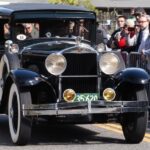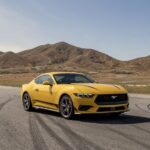The Wilbraham Hill Climb dates back to 1908, when some of the earliest cars took on the challenge of being the fastest up Monson Road in Wilbraham, Massachusetts. Today, the event is still going strong and has become a celebration of vintage vehicles of all types. The 2024 Wilbraham Hill Climb had 21 entries that encompassed 52 years of automotive history, stretching from a 1912 Mercer 35 to a 1963 Morgan +4. The variety of vehicles included rare museum pieces and home-built race cars that offered a great look into the world of vintage racing as they competed head-to-head to see which one would be the fastest. While the times they posted on the one-mile course varied considerably, they were all winners when it came to style and history.
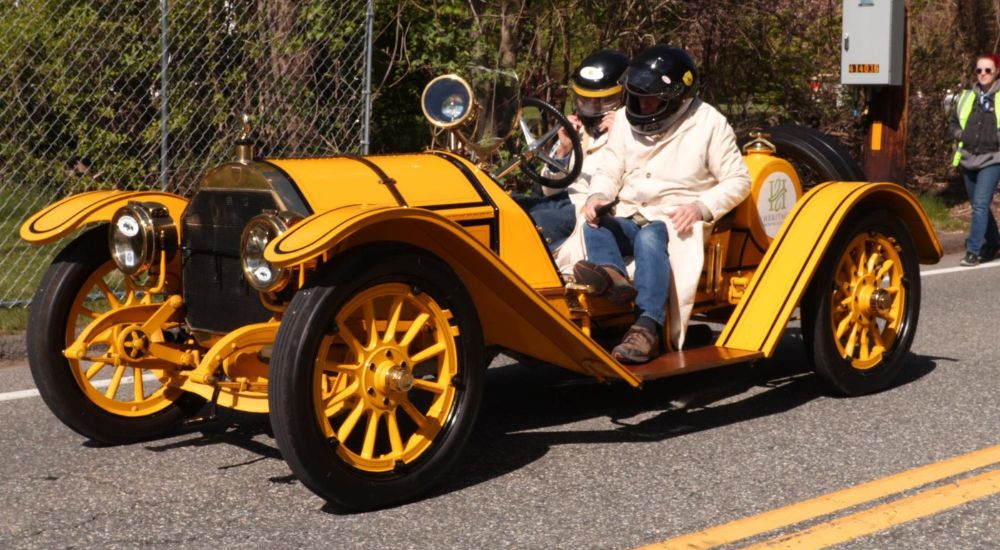
1912 Mercer 35 Raceabout
The oldest car at the event was a 1912 Mercer 35 Raceabout from the Heritage Museum and Gardens collection. Painted a bright yellow, this car stole the show in terms of looks, even if it was far from the fastest car up the hill. The Mercer Automobile Company was founded in New Jersey in 1909 and made a name for itself by building high-performance cars that dominated the early American racing scene and set several records. However, the company did not last long and was out of business by 1925.
The Mercer 35 was introduced in 1911 and is the brand’s best-known model. While there was a Runabout version with a windshield, soft top, and doors, this example is the stripped-down Raceabout. Designed purely for racing, it not only lacked bodywork but the fenders and lights could be removed as well for open-wheel events. This car is powered by a massive 4.8L T-head four-cylinder engine producing 58 hp and had a guaranteed top speed of over 70 mph, which was incredible for its day.
Like most race cars of its vintage, the Mercer 35 has two seats––one for the driver and one for the riding mechanic. When the car is running, the riding mechanic is responsible for keeping the fuel and oil systems pressurized by operating the brass hand pumps located beside his seat. In wheel-to-wheel racing, he would also keep the driver informed of nearby cars since there were no mirrors.
1932 Ford Model 18 Five Window
The Ford-Five Window is a fairly common sight in vintage circles, and this example set the fastest time of the day at a blazing 48.4 seconds, running the course in almost half the time of the Mercer 35. That speed was thanks to the powerful 3.6L Flathead V8 that Ford put in these cars, which produced 70 hp. The engine made such an impression in its day that these cars are often simply referred to as the “Ford V8.” Interestingly, the unorthodox “Model 18” designation also referred to the engine as it was Ford’s first (“1”) V8 (“8”). Cars built on this platform without the V8 were known as the Model B.
This particular model has seen its fair share of improvements to complement the capable engine, and the big rear tires definitely helped it put power down compared to the skinny tires that most of the vintage cars were running at the event. It has also had the fenders and engine covers removed and the suspension upgraded for better performance. These sorts of upgrades were often made by hotrodders back in the day, and this fast car also won praise from gangsters such as Clyde Barrow and John Dillinger for its dependability and performance.
1929 Chrysler Six Series 75 Roadster
Today, Chrysler is a dying brand with a lineup that consists solely of the Pacifica minivan. However, 100 years ago, Chrysler was on the cutting edge of luxury and performance, with the big Chrysler Six even making several appearances at the legendary 24 Hours of Le Mans endurance race. The brand’s final appearance at the race before the Great Depression cut its racing short was in 1929 when a pair of Chrysler Six models took sixth and seventh place out of a field of 25 cars. This car is based on those vehicles and made an imposing addition to the hill climb.
The 1929 LeMans cars consisted of a Series 75 and a Series 77, with the numbers representing their official top speeds, although the race cars could be significantly faster. That speed was thanks to the 4.1L inline-six that produced 84 hp and gave the Chrysler Six its name. While that was plenty of power for its day, this is a big touring car rather than a purpose-built lightweight sports car and was built to offer luxury as well as speed––think more like a Cadillac CT5-V Blackwing than a Chevy Corvette. There was also a beautiful beige 1931 Chrysler Series 70 Coupe at the event, which was powered by a slightly larger 4.4L engine.
1915 Ford Model T Speedster
If any car deserves to be called an icon, it’s the Ford Model T. Famous for putting the world on wheels thanks to its low price and mass production, the Model T was also a common sight in early motorsports events, and its ubiquity meant that it saw endless variants and modifications, most of them hand-built in backyards and garages. There were no fewer than five Model T examples in the 2024 Wilbraham Hill Climb, and they all stood out for each being totally unique. The oldest of them was this 1915 Speedster, which ironically represents a later version of the vehicle with its custom bodywork and heavily upgraded race-oriented suspension. Cars like this one could have been seen on the track throughout the 1920s before they were replaced by more modern designs.
The Model T originally came with a 2.9L inline-four producing just 20 hp for a top speed of around 40 mph (not that many drivers would want to go much faster with the soft suspension and unpaved roads of the day). However, hotrodders soon found ways to make this car significantly more powerful, and doubling the factory output is not unheard of. This modified speedster made it to the finish line in just 54.89 seconds, putting it only a few seconds behind the fastest time of the day and demonstrating just how fast a Model T can be if appropriately upgraded.
1923 Ford Model T Runabout
An example of a less modified Model T that participated in the race is this beautiful red runabout. Although it has its own share of upgrades, including the grille, driver windshield, and wire wheels, it still has the factory suspension with the single cross-mounted leaf spring. Place it next to the 1915 speedster, and it virtually looks like a different car, thanks to its much taller ride height and more traditional design. The gulf in performance is equally vast, with this car’s best time of the day being a glacial 2:17––more than twice that of the hot-rodded speedster. Still, this was a pristine example of a Model T and amply demonstrated just how much this common model could be transformed into entirely different vehicles based on the owner’s desires.
1931 Bugatti Type 37
Like many of the European supercar brands, Bugatti built its reputation in racing. The Bugatti Type 37 is a stripped-down race car that was a popular choice in its era because it was designed for affordability. Although based on the top-of-the-line Bugatti Type 35, the Type 37 replaced the powerful 3.0L inline-eight engine with a more manageable 1.5L inline-four. However, the 60 hp engine was still enough to give this lightweight vehicle a claimed top speed of nearly 100 mph and made it a common sight in Grand Prix racing. This particular Type 37 no longer has the original Bugatti engine, having had it swapped out for a Ford, but it still put on a good showing that demonstrated how the Bugatti name earned its place in automotive history.
1956 Porsche 356A
One of the most modern vehicles to race at Wilbraham was the Porsche 356A. Today, Porsche is renowned for building incredible sports cars, and that reputation began with the 356 in 1948. This was the very first car built by Porsche, although it shares many design features with the iconic Porsche 911 that succeeded it, including the iconic rear-engine layout borrowed from the VW Bug. A 356SL made history when Porsche became the first German manufacturer to enter the 24 Hours of Le Mans after WWII, walking away with a class victory. The 356A variant was introduced in 1956 and offered several upgrades, including the available 2.0L Carrera engine with 100 hp. However, most examples came with a 1.6L flat-four producing a more modest 75 hp.

